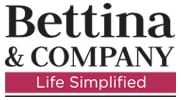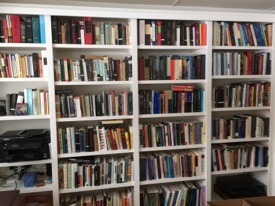As the need for big homes is on the wane, Baby Boomers have been moving to smaller quarters in record numbers. But how to do it?
Step 1. Knowledge is Power
What do you see in your future home? Know how you want your space to look and feel. How we approach a move starts first in our mind’s eye. What is the layout like? How many square feet compared to where you live now? If you know where you will be living, the numbers will be a big help. Even if they are not exact, they can inform the process. Roughly speaking, do you envision your next home half the size or less?
What changes can you make in your new space that will make your life easier and more enjoyable? I am here to tell you that not trying to fit too much in a smaller space is a liberating experience.
Step 2. The Sort
The Sort, or as I like to say, What stays? What goes? What lives elsewhere?
What stays are the items you are keeping. Remember you love X so much that you are paying to move it. Hold the bar high here and make your criteria that you love it and it works.
Right off the bat, that eliminates the broken, the obsolete, and the redundant. These are the items that go!
Trust me, we all have broken (“I am going to fix that”), obsolete (cassette tapes and VCRs, anyone?), and redundant (outdate electronic devices) items in our homes. These are what I like to call low hanging fruit. Don’t agonize over this category. Let these be the easy decisions. Give away what still has value and recycle the rest.
Apply this strategy to every category in your home. Your closets. When was the last time you wore it? Do you need a winter coat if you are moving south? Do you still ski or scrapbook?
What about tools and small appliances? Most of us have far more than we use regularly, and they take up precious real estate in our cabinets, basements, bathrooms, and garages. Now is a good time to lighten the load.
A word about books. Are you really going to read that book again? Books are heavy and expensive to move. And they make wonderful gifts and you can donate the rest to your local library book sale.
My former Life Simplified Radio guest librarian Nancy Crowell from Scarborough, Maine, once painted a vibrant picture about all the resources modern libraries offer. Whether you are looking to read a book, learn a skill, watch a movie, surf the net, find a group, libraries are a great place to connect with the people and vibe of the community.
I also recommend asking, “What lives elsewhere?” so you can think about the things you have in your space that don’t belong to you. The books and tools you borrowed? Return them now and complete the open loop they left while still in your possession. If the owner doesn’t want them, then don’t waste another moment and put them into the donation pile.
Step 3. Give Early and Often
Don’t let the executor of your will get all the credit. Give the heirlooms and gifts you want people to have now, so you can enjoy the precious act of giving. Even if you decide to keep an object d’art, make known now whom it is to go to.
It’s a Wrap
Implement these three steps before your move to smaller quarters and save yourself time, money, and, most of all, stress.








